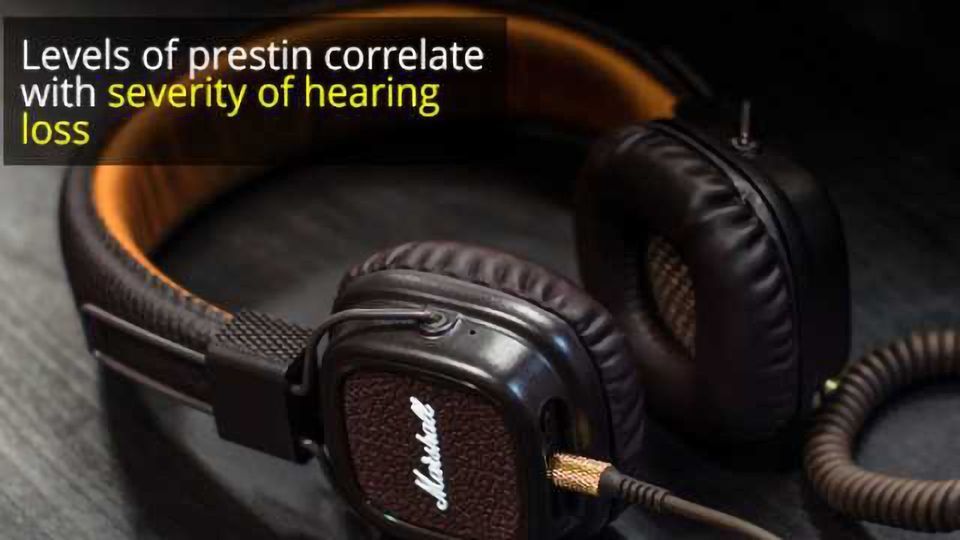Newly Discovered Biomarker Could Help Diagnose Hearing Loss Earlier

Complete the form below to unlock access to ALL audio articles.
In collaboration with UConn, Sensorion have identified the first potential biomarker for noise-induced hearing loss, findings which were recently presented at the 53rd American Neurotology Society Annual Spring Meeting. To find out more about the study and how the discovery could lead to improved diagnosis and treatment for patients, we spoke to Nawal Ouzren, CEO of Sensorion.
Anna MacDonald (AM): What makes the discovery of biomarkers of hearing loss particularly challenging?
Nawal Ouzren (NO): High throughput technologies have allowed us access to large datasets of differentially expressed mRNAs, microRNAs and proteins, but despite this wealth of information available to us there are only about 30 biomarkers approved by the FDA to date. The number of biomarkers approved is surprisingly low given the efforts by researchers and recent technological advances. Biomarker discovery is challenging, especially so in studying diseases of the inner ear. It requires a deep mechanistic understanding of disease progression, in our case understanding hearing loss.
Hearing loss is still not fully understood, which is due partly to the anatomy of the ear itself. Our ability to hear relies on the sensory cells (hair cells) and neurons that are found in the inner ear. The inner ear is physically inaccessible in humans, which presents challenges in studying its normal function and pathology as compared to other human organs. Researchers are still developing appropriate study models which we can use to further understand hearing loss and other diseases of the inner ear. Part of the challenge of understanding the pathology of hearing loss is that it has no single cause. Hearing loss can be inherited and oftentimes occurs because of acoustic trauma or prolonged exposure to loud noise, as well as toxicity from medications and idiopathic causes. In order to identify biomarkers of hearing loss, we will have to understand the evolution of each form of hearing loss.
AM: Can you tell us about the recent identification of Prestin as a potential biomarker for hearing loss?
NO: Sensorion collaborated with Dr. Kourosh Parham, Associate Professor and Director of Research in UConn Health’s Division of Otolaryngology-Head & Neck Surgery, and his team in a study in which they analyzed blood samples for levels of prestin, a potential biomarker for hearing loss, after noise-induced trauma. The cochlea is a part of the inner ear which contains outer hair cells (OHCs) that perform an amplifying role to manage the ability of the cochlea to tune sound. Prestin was earlier identified by our collaboration as a unique inner ear protein that is released when OHCs are injured, which can occur by exposure to loud noise. In our study, we found that the severity of hearing loss correlated with changes in levels of prestin circulating in the blood.
Sensorion is currently developing SENS-401 for hearing loss and has received Orphan Drug Designation in Europe for the treatment of sudden sensorineural hearing loss (SSNHL). The potential application of prestin as a biomarker for hearing loss is very exciting and we intend to implement measuring prestin levels in the clinical trial of SENS-401 for SSNHL.
AM: How can these findings be used to improve diagnosis of noise-induced hearing loss?
ON: New hearing loss detection methods are needed as the number of people suffering from noise-induced hearing loss is on the rise worldwide. The findings from our collaborative research study with UConn Health could be used to develop a simple blood test to detect type and severity of hearing loss in the future. Currently, the only way to diagnose hearing loss is through hearing tests like audiograms. However, there are limits to such hearing tests as they are not sensitive enough to detect hearing loss at its earliest stages. Oftentimes people do not realize they are losing their hearing because hearing loss occurs gradually. Unfortunately, hearing loss is currently irreversible so the earlier we can detect signs of hearing loss in an individual, the more proactive we can be in treating it and preventing further hearing loss.
AM: What is ototoxicity, and what can be done to improve the high rates of hearing loss seen in pediatric cancer patients?
NO: Ototoxicity literally means “ear poisoning” (oto= ear, toxicity= poisoning) and refers to drug or chemical-related damage to the inner ear. It is often the result of platinum-based agents, like cisplatin, which are used to treat a wide range of cancers. Inner ear damage due to ototoxicity leads to hearing loss, and when it does, it often occurs very rapidly. Hearing loss is observed in both children and adult patients treated with cisplatin. However, children have been shown to be more susceptible with at least 50% suffering from hearing loss as a side effect, demonstrating a large unmet need as there is no treatment available to address this issue. Studies have shown that hearing loss in children affects learning and social development. Thus it is critical that we help pediatric patients with cancer who are at risk of losing their hearing due to cancer treatment.
Sensorion is also developing SENS-401 for ototoxicity, in addition to SSNHL, and has received Orphan Drug Designation from the US FDA for the prevention of platinum-induced ototoxicity in the pediatric population. Earlier studies with SENS-401 demonstrated its ability to prevent cisplatin-induced hearing loss. Interestingly, elevated levels of prestin have been shown by Dr. Parham’s group in ototoxicity (cisplatin) models. These findings demonstrate the potential application of measuring prestin levels to confirm SENS-401 activity in preventing ototoxicity.
Additionally, we are working with cancer survivor advocacy groups to educate the FDA about this issue of hearing loss due to cancer treatments, particularly in children. By working with the FDA, we can help design more patient-centric clinical trials which will allow us to further develop SENS-401 and other potential therapeutics to prevent and treat hearing loss in patients fighting against cancer.

Nawal Ouzren was speaking to Anna MacDonald, Science Writer for Technology Networks.


